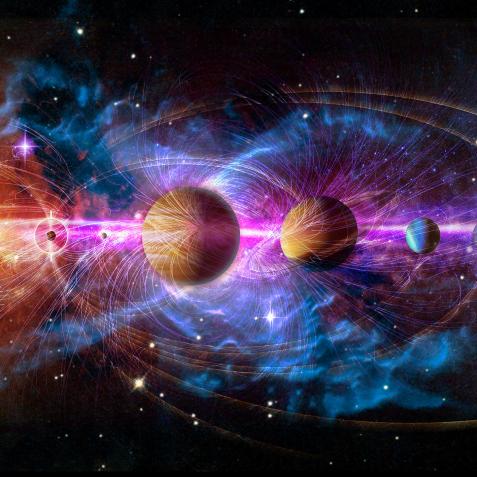
NASA/JPL-Caltech/R. Hurt (SSC)
What Is a “Super Earth” and Why Do We Care?

Super Earths are super cool, and you should really know about them. In short, they are planets slightly bigger than the Earth (hence the name). And the cool part? They might be a home for life, and they’re way easier to study than regular Earths.
It’s kind of amazing to realize that in the past couple decades we have confirmed detections of over 4,000 exoplanets, or planets orbiting other stars. Mind you, this is but a tiny fraction of the estimated trillion exoplanets roaming the Milky Way galaxy, but it’s still way better than we had in the 20th century (which was zero), so we should still be proud of ourselves.

NASA
Our galaxy, the Milky Way, is typical: it has hundreds of billions of stars, enough gas and dust to make billions more stars, and at least ten times as much dark matter as all the stars and gas put together. And it’s all held together by gravity.
As soon as astronomers started finding exoplanets, they realized what a wonderful zoo we live in. Planets orbiting dead remnants of stars. Planets bigger than Jupiter orbiting closer to their star than Mercury does the Sun. Planets so hot that they rain lead. Purple planets.
And the Super Earths. Rocky planets slightly larger than the Earth, orbiting within the Habitable Zones of their parent stars – the place where liquid water can potentially exist on a planetary surface and where life like our own has the best shot of surviving.
Here’s the thing. Astronomers are searching for Earth 2.0, a replica of our own system somewhere out there in the cosmos. We haven’t found one yet, but we have found a bunch of Super Earths. So, if we want to play the “look for life” game, we’ve got to play with the hand that we’ve been dealt.

NASA
Super-Earths – a class of planets unlike any in our solar system – are more massive than Earth yet lighter than ice giants like Neptune and Uranus, and can be made of gas, rock or a combination of both. They are between twice the size of Earth and up to 10 times its mass.
Here’s how we play that game. Astronomers detect distant exoplanets through something called the transit method. When a planet’s orbit just so happens to line up just right, it will periodically cross the face of its parent star from our point of view. Obviously, this lucky coincidence doesn’t work for the vast majority of exoplanets out there, but there are so many dang stars out there that it ends up working enough times that we can find thousands of exoplanets.
When the exoplanet crosses in front of the star, the light from that star dims just a little bit. By staring at lots and lots of stars, we can look for this telltale dimming and spot an exoplanet.
This method is much better at finding bigger planets than smaller ones, because the bigger planets make more dimming. So, we tend to find more Super Earths than normal Earths.
Dive Deeper into the Cosmos
Journey Through the Cosmos in an All-New Season of How the Universe Works
The new season premieres March 24 on Science Channel and streams on discovery+.
And some of those Super Earths have atmospheres.
When the Super Earths begin to cross in front of their stars, for a little bit of time some of the starlight filters through the planet’s atmosphere. WE can use that filtered light to detect the elements and molecules in that atmosphere.

NASA/Ames/JPL-Caltech
The artist's concept depicts Kepler-62f, a super-Earth-size planet in the habitable zone of a star smaller and cooler than the sun, located about 1,200 light-years from Earth in the constellation Lyra.
Elements, like, I don’t know…oxygen. An abundance of oxygen is a clear sign for the potential of life, since the only know way to get a lot of oxygen in a planetary atmosphere is through photosynthesis.
Given the nature of our observing methods, we might be much more likely to find our first hints of extraterrestrial life not on an Earth 2.0, but one of our Super cousins.




















